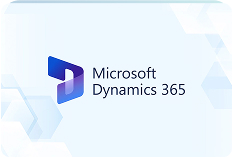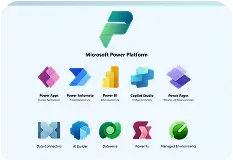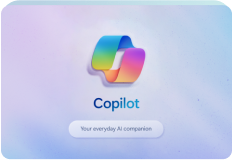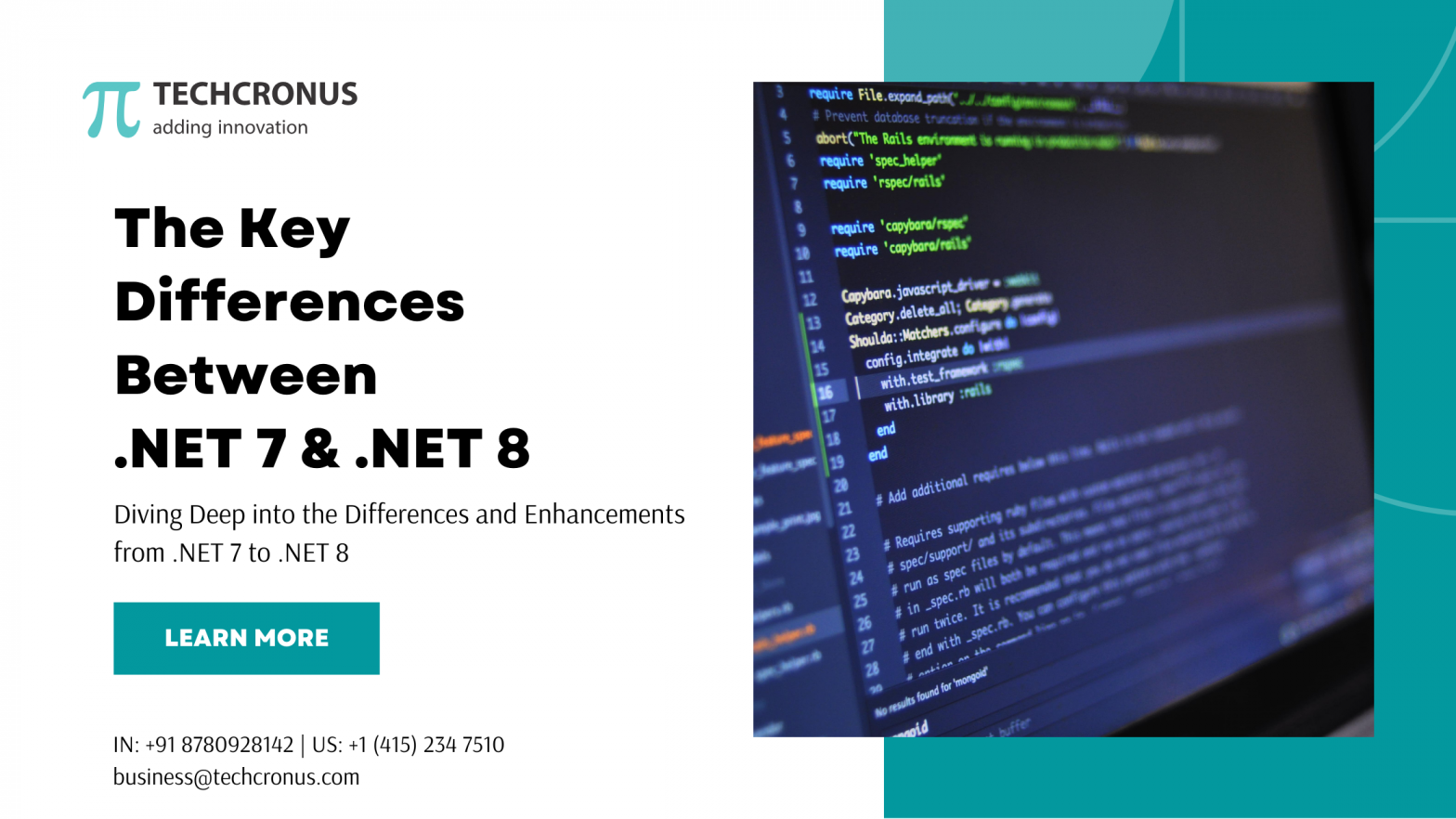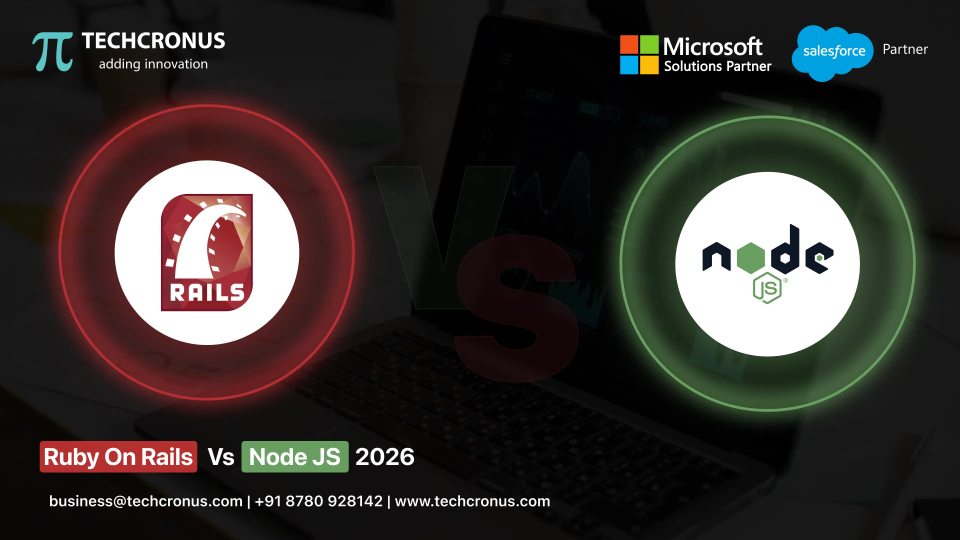Table of Contents
Software and custom app development with sometimes developed landscape, remaining equal to the latest progression is important for developers in all stages of their career. In the realm of .NET, the recent release of .NET 7 and .NET 8 has made considerable interest and debate within the developer community. While the two versions share the same core foundation, they claim different identity, each food for a specific set of needs and preferences.
The objective of this blog is to demolish the intricacies of .NET 7 and .NET 8, guide dot net developers through widespread comparison of their major differences. Through a deep dive in cases of performance adaptation, convenience introduction, language support and ideal use, we make you empowered to make an informed decision when choosing the right foundation for your next project.
During this exploration, we will carefully examine:
Performance: Unveiling of benchmarks and real -world examples that define their execution speed, memory use and overall resource efficiency.
Features: Novels introduced in .NET 8 delay in functionalities and their influence on your development workflow.
Language support: Highlighting the C# version compatibility and language reforms introduced by each recurrence.
Integration and equipment: assessing their compatibility with popular devices and outlines such as visual studios and entity framework.
Security: To check security enhancement and potential weaknesses to ensure a safe development environment.
Support and update: official support lifestyle and understanding the migration process contained.
By the end of this trip, you will have a clear understanding of where each version excellence and factors that should guide your selection. Are you ready to start this comparative exploration? Buck, and let’s unveil the actual capacity of .NET 7 and .NET 8!
.NET 7 vs .NET 8: Exploring Major Differences
1. Performance:
When it comes to performance, developers demand efficiency. Both .NET 7 and .NET do 8 delivery, but in different degrees. When we dissect their execution speed, memory consumption and resource use, you help you choose the champion for your next project.
A) Execution Speed:
The benchmark fight tells the story. Techempower JSON benchmark,, .NET 8 claims an increase in impressive speed of 18% on its predecessor. Similarly, luck benchmark reveals a notable 24% jump. This number translates into real-world benefits-pages load from Teji, smooth API calls, and generally more responsible user experience.
B) Memory Management:
Resource efficiency is important, especially for memory-intensive workload. While both versions display reforms, .NET 8 shines bright. Its increased garbage collector reduces memory allocation, which reduces the memory footprint and performs better under pressure. Remember, low memory usage translates into more efficient cloud signs and cost savings.
C) Resource Utilization:
Beyond raw speed and memory, each version has made a complete picture of resources effectively. The customized Just-in-Time (JIT) compiler of .NET 8 plays a played role. This code analyzes patterns, producing highly customized machine code that executes your target hardware efficiently. It translates to noticeable performance benefits in diverse workloads from the web application to complex data processing works.
D) Real-World Examples:
The benchmarks are valuable, but practical examples actually resonate. Consider a microsarvis architecture built on .NET 7. Upgrade to .NET 8 can lead to rapid API reactions, leading to a smooth user experience for your customers. Similarly, a data analytics app can see improvement in significant performance in processing large datasets due to the memory optimization of the Ante 8.
E) Influencing Factors:
It is important to remember that the performance is not determined by the only .NET version you have been selected. Target workloads, framework and coding practice all play an important role. If your primary anxiety has basic CRUD operations in a simple web application, the performance difference between .NET 7 and .NET 8 may be negligible. However, for the applications that push resource-intensive tasks or boundaries, the adaptation of the .NET 8 can shine.
2. Language Support:
For developers, language compatibility and reforms play an important role in project plan and maintenance. Let’s delay C# Compatibility and Language Progress introduced by .NET 7 and .NET 8, assessing their impact on their development journey.
C# version compatibility:
.NET 7: C hugs# 11, provides the developers access to facilities such as:
- Top-level statement for cleaner and more brief code.
- Global using instructions for streamlined imports.
- Raw string literally for easy manipulation of action string.
.NET 8: Takes the language one step forward, introducing compatibility with C# 12. It brings exciting additions like:
- Primary constructs for streamlined object initiatives.
- Conditionally scopped names for better code organization.
- Default parameter value for enhanced function flexibility.
- Effect on current codebase:
Minimum Interruption with .NET 7:
If your codebase follows C# 10 standards, upgrading to .NET 7 should be relatively smooth. Features such as top-level statements may require minor adjustments.
Potential migration considerations with .NET 8:
Upgrading to C# 12 and .NET 8 might involve more significant code revisions to leverage new language features. However, the benefits in terms of code readability, maintainability, and expressiveness can be substantial.
Developer Experience:
.NET 7: The new language provides access to features, developing developers productivity and code clarity.
.NET 8: C# 12 provides exciting possibilities, codes carry forward the boundaries of expressivity and streamlines development workflows. However, new developers may require adjustment period for these features.
Choosing the right path:
Decision between .NET 7 and .NET 8 depends on your specific context:
Current Codebase: If it is important to maintain compatibility with C# 10 codebase, .NET 7 can be a safe option.
Modernization and new features: If you are eager to embrace the latest C# progress and customize the experience of growth, the .NET provides a compelling benefit.
Remember, to ensure a smooth transition and maximize the codebase to maximize the benefits of the chosen version, it is important to tested and plan a complete testing and planning.
3. Integration:
Developers thrive on streamlined workflows and spontaneous integrations between the tools and the framework. Let us reconcile the notes of .NET 7 and .NET 8, analyze their integration capabilities and how they affect your development experience.
Popular Equipment and Framework:
Visual Studio: Both versions enjoy full support within the visual studio, offering familiar development environment and debugging tools. However, .NET 8 benefits from specific enhancement: eg:
- C# 12 Better Intellisense for features.
- The Project Construction for the .NET Maui and Blazor applications.
- Ejure integration enhanced for cloud-based growth.
Antity Framework: This popular ORM is compatible with both versions. However, .NET shows support for 8:
- Complex types as value items for better data modeling.
- Support hiered data in SQL server for flexible data structures.
- Performance adaptation for smooth database interactions.
Integration Ease:
- .NET 7: Generally maintains existing integration mechanisms with popular tools and frameworks.
- .NET 8: While retaining legacy integration, it strives for smoother and more optimized interactions with newer tools and features.
Debugging and Development Environment Support:
.NET 7: Offers robust debugging tools and integrates seamlessly with Visual Studio and other popular IDEs.
.NET 8: Expands upon these capabilities with:
- Enhanced debugging experience for asynchronous code.
- Improved memory profiling tools for identifying bottlenecks.
- Deeper integration with cloud-based development environments.
Choosing the Right Harmony:
Your selection should prioritize seamless integration with your preferred tools and workflow. Consider:
- Existing tools and projects: If heavily invested in specific tools, ensure compatibility with your chosen version.
- Desire for latest features: If you value the newest debugging and integration features, .NET 8 might be the more compelling choice.
4. Security Enhancements:
In today’s digital scenario, the security center takes the stage. Let’s fly into the safety enrichment and potential weaknesses of .NET 7 and .NET 8, leading you to the safest path for your development efforts.
.NET 7: Better memory management introduces, reduces the risk of buffer overflow and other memory-related weaknesses. Additionally, it integrates with the latest security protocols such as TLS 1.3 and provides the underlying support for safe random number generations.
.NET 8: Further fortifications construct on this foundation:
- Code analysis tools to detect potential weaknesses during development.
- .NET SDK update update through mechanisms updated.
- Strict enforcement of safe coding practices through compiler warnings and errors.
Possible weaknesses:
Both versions have inherited weaknesses for .NET runtime and underlying operating systems.
New features, while beneficial, can introduce unexpected weaknesses during early release.
Security ideas:
Stay update: Regardless of your chosen version, ensure regular updates and patching to address the newly discovered weaknesses.
Safe coding practices: Follow using stable code analysis tools to secure coding guidelines and reduce potential security risks.
Danger Modeling: Work for a complete danger to identify and reduce the specific possible attack vectors for your application.
Selection of safe path:
Stability: If it is important to prioritize maximum stability and installed safety track records, .NET 7 can be a safe option.
Latest enrichment: If it is necessary to embrace the latest security facilities and automated updates, the .NET 8 provides compelling benefits.
Remember, security is an ongoing journey, not a destination. Be mindful of evolving threats, stay updated, and adopt secure coding practices regardless of your .NET version choice.
5. Observability and Diagnostics: Game Changer in .NET 8:
In today’s complex software scenario, observation shines as a beacon, guides developers towards healthy and performing applications. It empowers the understanding of the system from within, providing important insights into application behavior, performance and potential issues. This section delays the opposite approaches to observe .NET 7 and .NET 8, highlighting the revolution brought by the latter.
.NET 7: Navigating with Third-Party Tools:
Observability in .NET 7 primarily relied on third-party tools. While effective, this approach faced challenges:
- Vendor lock-in: Committing to specific tools restricted flexibility and potentially increased costs.
- Integration overhead: Implementing and managing disparate tools added complexity to development workflows.
- Standardization issues: Heterogeneous data formats hindered comprehensive analysis across tools.
While .NET 7 offered some built-in features like Event Tracing for Windows (ETW) instrumentation, they catered to specific scenarios and lacked broader, integrated solutions.
.NET 8: Embracing the Observability Revolution
.NET 8 marks a paradigm shift in observability, offering an array of native features that empower developers:
- ASP.NET Core Metrics: This game-changer simplifies performance data collection and analysis. Define custom metrics specific to your application, gain insights into resource utilization, and identify bottlenecks proactively.
- OpenTelemetry Integration: Embrace industry standards with built-in OpenTelemetry support. Collect, process, and export traces, metrics, and logs in a standardized format, enabling seamless integration with various observability tools and platforms.
- Diagnostic APIs: Dive deeper into application internals with comprehensive diagnostic APIs. Gain detailed insights into exceptions, memory usage, and thread contention, aiding in precise troubleshooting and root cause analysis.
- Enhanced Logging: Structured logging capabilities, introduced in .NET 7 and further improved in .NET 8, ensure consistent and machine-readable log data, simplifying analysis and aggregation across systems.
Impact on Developers: A Brighter Future
These advancements translate to significant benefits for developers:
- Streamlined development and debugging: Built-in tools reduce reliance on external solutions, saving time and effort. Debugging becomes more efficient with deeper insights into application behavior.
- Proactive performance monitoring: Identify and address potential issues before they impact users, ensuring optimal application performance and user experience.
- Reduced costs: Lower reliance on third-party tools can lead to cost savings, especially for large-scale deployments.
Choosing the Right Path: .NET 7 vs. .NET 8
When choosing between .NET 7 and .NET 8, consider these factors:
- Existing infrastructure: If you’re heavily invested in third-party observability tools, migrating to .NET 8 might require adjustments. However, the long-term benefits of standardized and integrated observability are significant.
- Desired level of detail: .NET 8 offers deeper insights and broader capabilities, while .NET 7 might suffice for simpler scenarios.
- Developer expertise: Transitioning to new features requires some learning curve. Assess your team’s comfort level with the latest .NET 8 offerings.
Remember, .NET 8 is a significant leap forward in observability, providing a robust and future-proof foundation for building, monitoring, and maintaining performant applications. Embrace the revolution and unlock the power of deep insights into your .NET applications!
6. Cross Platform Compatibility:
.NET 7: Building Upon Familiar Ground:
- Inherits the cross-platform capabilities of .NET 5, supporting Windows, macOS, Linux, and WebAssembly.
- Utilizes established frameworks like .NET MAUI and Xamarin for mobile and desktop app development.
- Offers a familiar development experience for existing .NET developers migrating from previous versions.
Limitations:
- Some specific features or libraries might have limited cross-platform availability.
- Performance optimization across diverse platforms might require additional considerations.
.NET 8: Expanding the Horizons:
Introduction to important enrichment to spontaneous cross-platform development:
- Developers can create a high-performance cross-platform application with single codebase.
- Multi-platform reduces the time and resources of development compared to growth.
- Reaches wide audiences in diverse tools and operating systems.
Selection of your cross-platform champion:
Focus on established platforms and familiar framework: Opt for .NET 7 if targeting known platforms and prioritizing a smooth migration from previous versions.
Seek wider reach and advanced cross-platform performance: Embrace .NET 8 if targeting diverse platforms and maximizing cross-platform optimization potential.
7. Support Lifecycles:
Like any software, .NET versions enjoy their time in the sun, and eventually, sunset. Understanding support lifecycles and upgrade paths empowers you to make informed decisions, ensuring your development projects remain secure and supported.
.NET 7: Receives mainstream support until May 14, 2024. This includes monthly security and bug fixes, essential for maintaining application stability and security. Extended support continues until November 10, 2026, providing critical security updates but no new features.
.NET 8: Recently released (November 14, 2023), enjoys mainstream support for three years until November 10, 2026. This ensures regular fixes and advancements throughout its lifecycle. Extended support kicks in on that date, lasting for an additional two years, until November 12, 2028.
Upgrade Paths:
- Moving from .NET 7 to .NET 8: Generally considered a smooth process due to version proximity and Microsoft’s migration tools. However, potential breaking changes and new API learning curves should be factored in.
- Upgrading beyond .NET 7’s mainstream support: While possible, navigating multiple version jumps might introduce unforeseen complexities and require extra testing efforts.
Challenges for Existing .NET 7 Applications:
- Potential code refactoring: Breaking changes introduced in .NET 8 might necessitate code adjustments to maintain functionality.
- Testing and verification: Thorough testing across all layers and dependencies is crucial to ensure a seamless upgrade without regressions.
- Third-party library compatibility: Verify compatibility of utilized libraries with the new .NET version to avoid potential issues.
Making the Decision:
- Stability and minimal disruption: If prioritizing established features and minimizing upgrade effort, staying with .NET 7 within its mainstream support window might be optimal.
- Embracing the latest advancements: Upgrading to .NET 8 unlocks new features and benefits but requires careful planning, testing, and potential code adjustments.
Use Cases For .Net 7 & .Net 8:
.NET 7: Stability and Familiarity
Existing .NET projects: Smoothly maintain projects developed on .NET 7 within its support window.
Stable requirements: If features and performance in .NET 7 suffice, minimize disruption by maintaining the current version.
Limited resource availability: Prioritize effort on core development rather than extensive refactoring for a minor version upgrade.
Drawbacks of moving to .NET 8:
- Potential breaking changes requiring code adjustments.
- Missing out on newer features and performance improvements.
.NET 8: Innovation and Performance
- New projects: Leverage the latest features and optimizations for a competitive edge.
- Performance-critical applications: Benefit from performance enhancements like Native AOT and improved JIT compiler.
- Modern development practices: Utilize minimal APIs, advanced AI capabilities, and enhanced Blazor for cutting-edge solutions.
Specific Use Cases:
- Microservices: Leverage minimal APIs for efficient and scalable communication.
- Cloud-native deployments: Take advantage of Native AOT for faster startup times and smaller deployments.
- Mobile and cross-platform development: Utilize .NET MAUI’s wider platform support and performance improvements.
- Data-intensive applications: Benefit from PGO for tailored performance optimizations.
Migrating from .NET 7 to .NET 8: A Step-by-Step Guide
Embarking on a migration from .NET 7 to .NET 8 opens doors to new features and performance enhancements. While seemingly straightforward, careful planning and execution are crucial for a smooth transition. Here’s a step-by-step guide to navigate your migration journey:
Step 1: Evaluation and Planning:
Assess project compatibility: Analyze your application’s dependencies, libraries, and codebase for potential compatibility issues with .NET 8. Utilize tools like the .NET Upgrade Assistant to identify potential roadblocks.
Define upgrade goals: Clearly outline the desired benefits and objectives of migrating to .NET 8. This guides your focus and prioritization during the process.
Create a migration roadmap: Establish a phased approach, outlining key tasks, responsibilities, and timelines for each step.
Step 2: Upgrade Preparation:
Back up your codebase: Create a comprehensive backup of your entire project directory before initiating any changes.
Update dependencies: Ensure all third-party libraries and NuGet packages have compatible versions available for .NET 8. Update them systematically, addressing any conflicts that arise.
Test thoroughly: Set up robust unit and integration tests to identify potential regressions introduced during the upgrade process.
Step 3: Code Migration:
Upgrade the .NET SDK: Install the latest .NET 8 SDK and update your project’s target framework references to .NET8.0.
Address breaking changes: Review identified breaking changes in .NET 8 documentation and adapt your code accordingly. Microsoft’s migration guides and community resources offer valuable support in this phase.
Leverage migration tools: Utilize the .NET Upgrade Assistant and other specialized tools to automate parts of the code migration process and streamline adjustments.
Step 4: Testing And Deployment:
Extensive testing: Conduct rigorous testing across all application layers, functionalities, and integration points to ensure seamless operation after the upgrade.
Performance testing: Evaluate the impact of the upgrade on application performance. Leverage available profiling tools to identify optimization opportunities.
Deployment planning: Carefully plan your deployment strategy, considering rollback options and potential downtime to minimize disruption.
Step 5: Monitoring And Support:
Monitor application health: Actively monitor your application post-deployment, addressing any issues that arise promptly.
Stay updated: Keep yourself informed about future .NET 8 updates and security patches to maintain a secure and optimized environment.
Challenges And Tools:
Challenges In Migration From .Net 7 to .Net 8:
- Breaking changes: Anticipate and carefully address potential breaking changes introduced in .NET 8. Microsoft’s documentation and community resources offer valuable support.
- Testing effort: Allocate sufficient time and resources for thorough testing throughout the migration process to ensure a smooth transition.
- Third-party library compatibility: Verify compatibility of all utilized libraries with .NET 8 to avoid potential issues.
Useful Tools For .Net 7 To .Net 8 Migration:
- .NET Upgrade Assistant: Automates parts of the code migration process and identifies potential breaking changes.
- Visual Studio: Streamlines development and migration with project management, debugging, and testing capabilities.
- NuGet Package Manager: Manages dependencies and updates third-party libraries efficiently.
- Profiling tools: Analyze application performance and identify potential optimization opportunities after the upgrade.
Navigating the .NET landscape can feel like exploring a vast digital continent. Whether you choose the stability of .NET 7 or embrace the innovation of .NET 8, remember: the key lies in understanding your project’s unique needs and aligning your choice with its goals.
By carefully evaluating requirements, planning meticulously, and leveraging available resources, you can ensure a smooth transition and unlock the full potential of your chosen version.
Remember, the journey doesn’t end with the initial upgrade. Stay updated, embrace best practices, and continuously optimize your development process to keep your applications thriving in the ever-evolving tech world.

Techcronus: Your Trusted Guide on the .NET Path
At Techcronus, we are passionate about empowering businesses with the transformative potential of .NET. Our team of expert developers possesses the skills and experience to navigate the intricacies of both .NET 7 and .NET 8, guiding you towards the version that best serves your unique objectives. Whether you require assistance with migrating existing projects, crafting cutting-edge .NET 8 applications, or simply seeking expert advice, Techcronus is your one-stop solution.
Partner with us today and embark on a successful .NET journey!
Contact Us For A Free Consultation.



